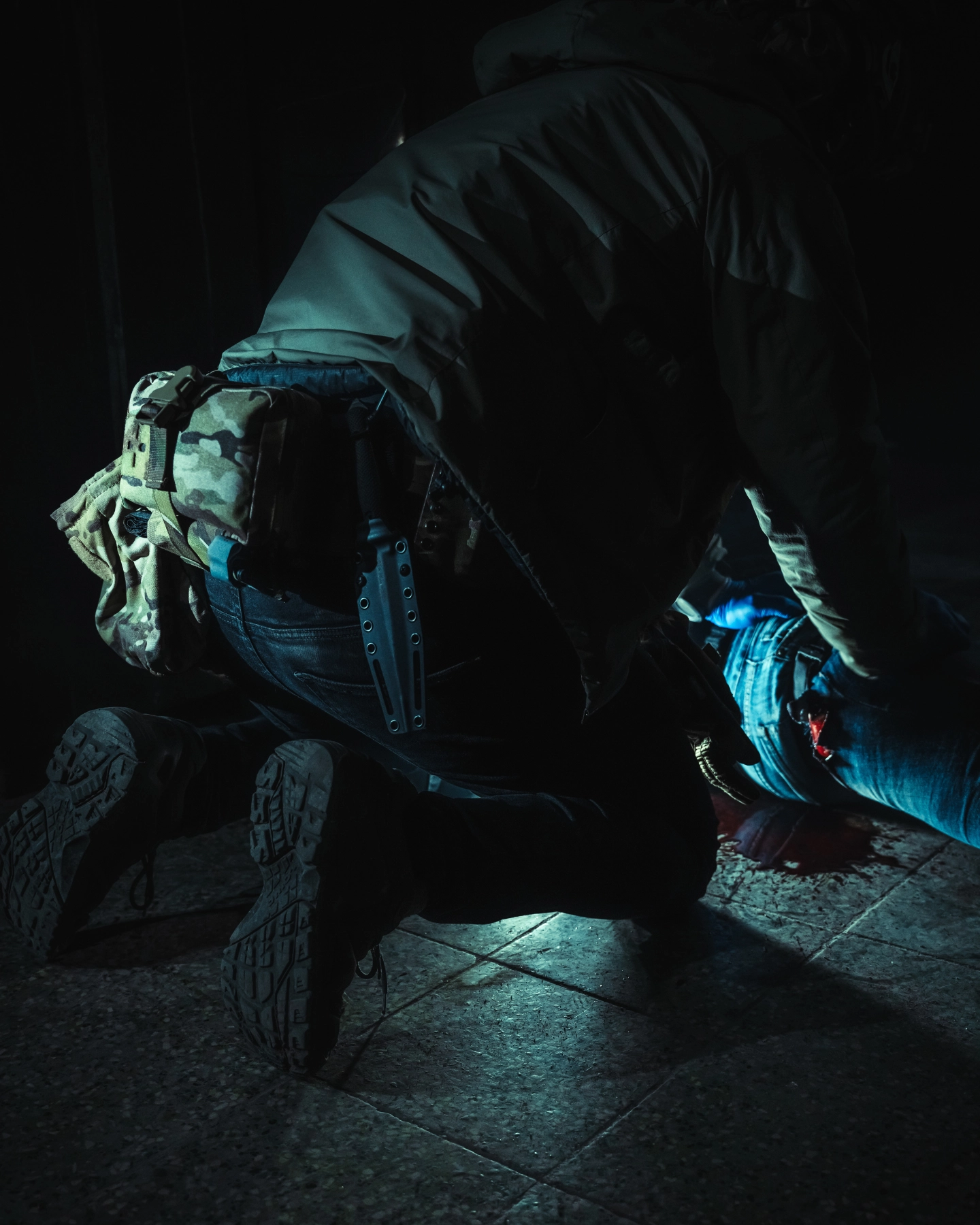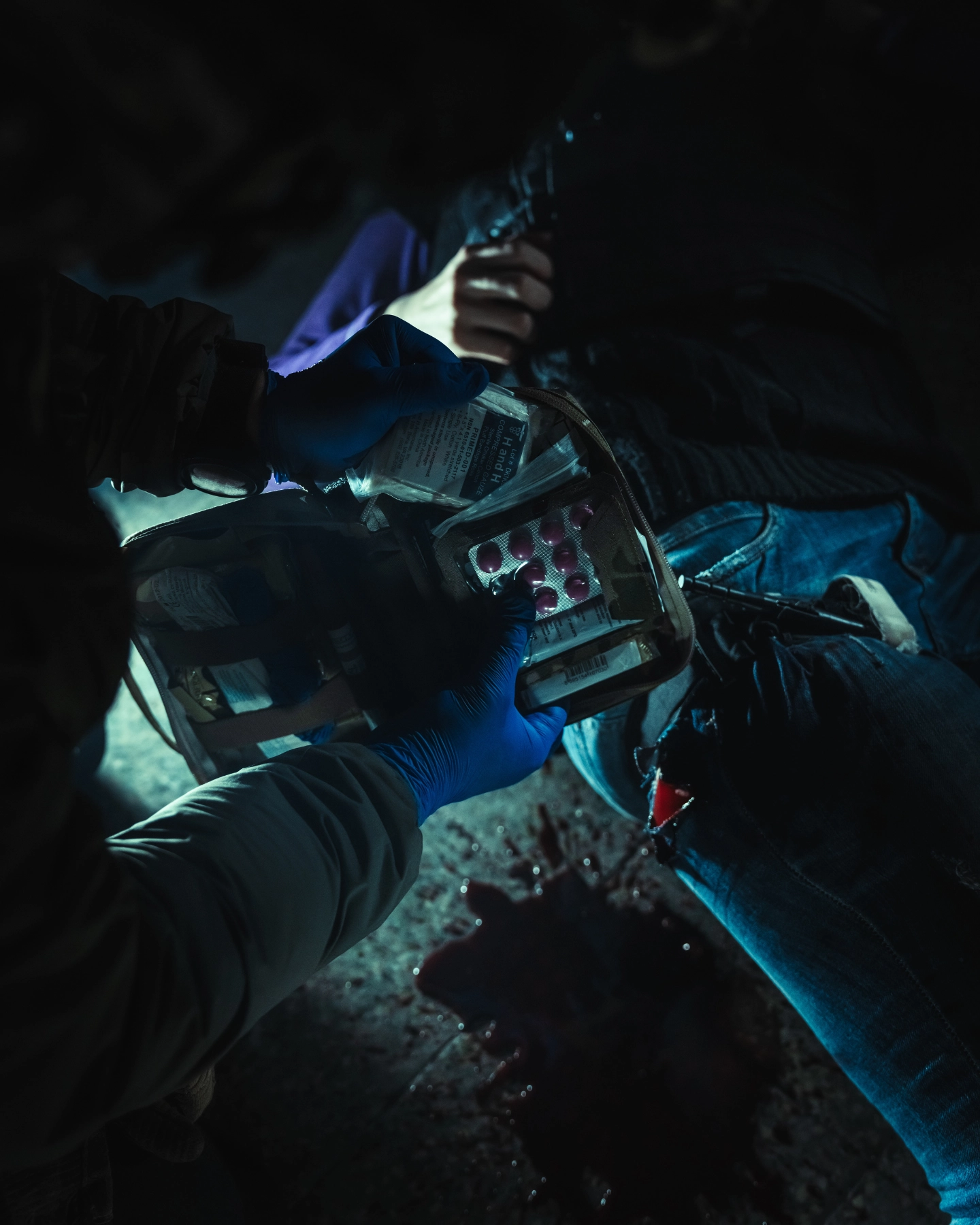First aid in nature: Basic tips for bushcraft and airsoft
Knowledge of first aid is essential not only in bushcraft, but also in airsoft and in everyday life. The ability to respond quickly and effectively to an injury can sometimes be crucial and pivotal. Here is a detailed guide on how to deal with common medical problems in the field.

1. Basic equipment of the first aid kit
A well-equipped first aid kit is essential. It should include:
Plasters: different sizes for different types of injuries.
Sterile dressings: for treating cuts and abrasions.
Antiseptic wipes: For cleaning wounds.
Tweezers and scissors: For removing foreign objects and cutting dressings.
Painkillers: For example, ibuprofen or paracetamol.
Antihistamines: To relieve allergic reactions.
Personal medication: Anything you take regularly.
2. Treatment of cuts and abrasions
Cleaning the wound: use clean water or an antiseptic solution.
Sterile dressing: Apply to the wound and ensure it does not become infected.
Deep wounds: In case of deep and bleeding wounds, see a doctor or call the emergency services.

3. Stop the bleeding
Pressure dressing: Use a pressure bandage to stop heavy bleeding.
Duration of bleeding: If bleeding does not stop, call the emergency services.

4. Treatment of burns
Cooling: cool the burn with clean water for at least 10 minutes.
Sterile dressing: Apply a sterile dressing and avoid bursting blisters.
Larger burns: Seek immediate medical attention.
5. Treatment of insect stings and bites
Removing the sting: If it is visible, remove it with tweezers.
Cooling: Apply an ice or cold compress to reduce swelling.
Antihistamines: Use to relieve itching and swelling.
Allergic reactions: Watch for any signs of an allergic reaction, such as difficulty breathing, and seek medical attention.

6. Prevention and treatment of hypothermia
Keeping warm: Keep the casualty warm, use dry clothing and isothermal foil.
Warm drinks: Provide warm, sweet drinks if the casualty is conscious.
Direct heating: Avoid direct heating of the skin.
7. Reaction to heatstroke and heatstroke
Shade and cooling: move the casualty into the shade and cool him/her with damp cloths or a shower of cool water.
Fluids: Provide plenty of fluids, ideally electrolyte drinks.
Serious symptoms: If symptoms are serious, seek medical attention.
Summary
Take regular first aid courses and keep your knowledge up to date. In crisis situations it is important to stay calm, act quickly and effectively and call for help if possible. Knowing first aid can help you cope with unexpected situations not only in the outdoors but also in everyday life. Be prepared and always keep a well-equipped first aid kit handy!
Powered by Froala Editor